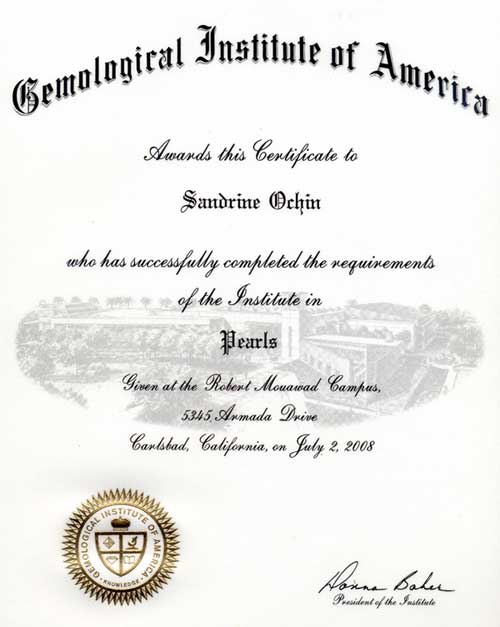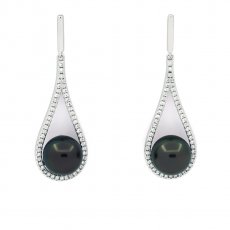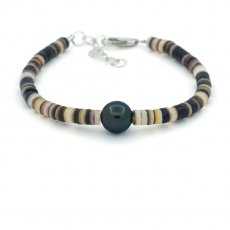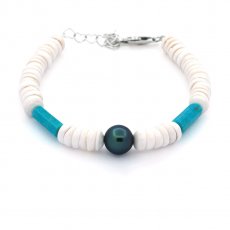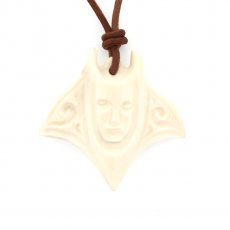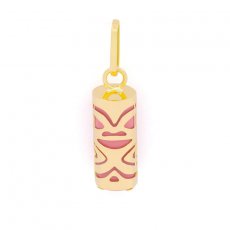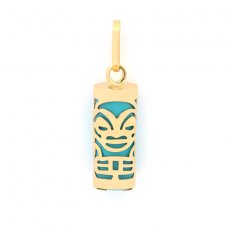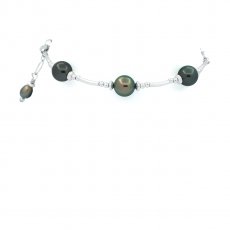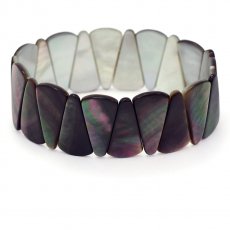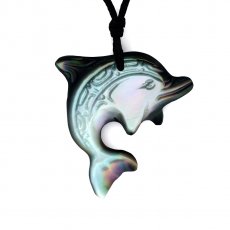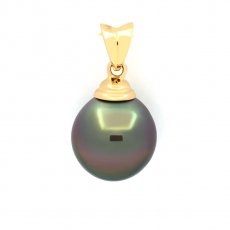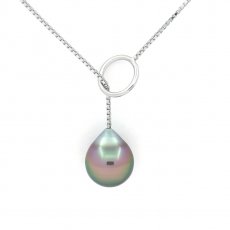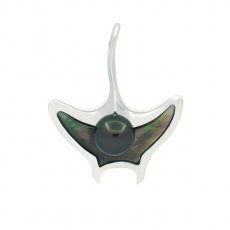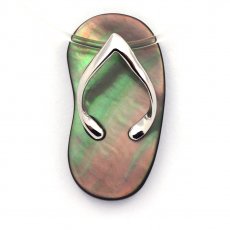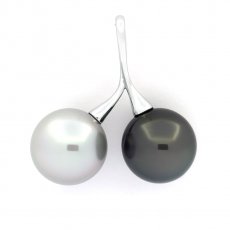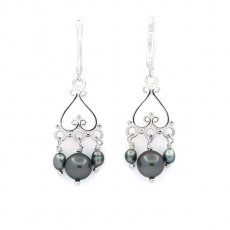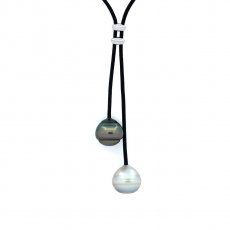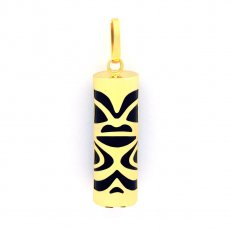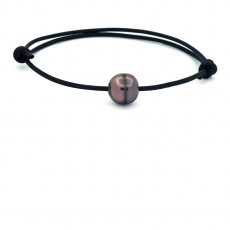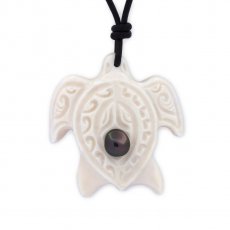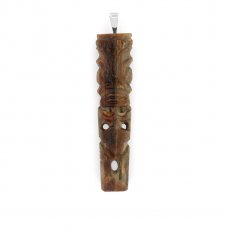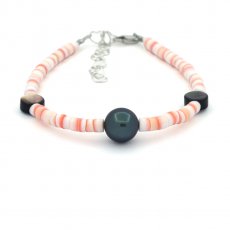The Colours of Tahitian Pearls
The magic of Tahitian pearl colours: between genetics, light, and human hands
When we think of Tahitian pearls, we immediately picture a dark orb with metallic reflections. Yet behind the label "black pearl" lies a range of shades as vast as it is subtle, from emerald green to aubergine pink, shimmering greys, deep blues, and warm bronzes. But where do these unique tones come from?
The answer lies in a subtle interplay between biology, environment, and human expertise.
The key role of the oyster: Pinctada margaritifera
Tahitian cultured pearls come from a specific mollusk: the Pinctada margaritifera var. cumingii, also known as the black-lipped pearl oyster. It is the only pearl oyster species in the world with dark lips, the black edge visible when the shell is open, which strongly influences pearl pigmentation.
The pearl’s colour comes from the nacre secreted by the oyster, composed of alternating layers of aragonite and conchiolin built around a manually inserted nucleus.
A play of layers and light
Unlike gemstones, a pearl’s colour is not fixed. It is the result of light interference: light passes through the nacre layers, reflects, refracts, and returns to the eye with an iridescent glow. This is known as the pearl's orient—that signature “oil slick” effect.
The thickness, transparency, and structure of the layers all influence the perceived colour. Thinner layers create sharper, more vibrant reflections.
Natural hues shaped by multiple factors
Several elements influence the final colour of a Tahitian pearl: The donor oyster’s nacre colour (used to make the graft) has a direct impact—reddish, greenish or dark-grey nacre will influence the final hue.
The genetics of the host oyster, which secretes the nacre and varies just as humans vary in skin or eye colour.
The environment (water quality, depth, temperature, salinity) affects how the nacre forms.
The culture time: the longer the pearl stays in the oyster, the more nacre it accumulates—altering colour and depth.
No artificial colouring: nature does it all
Tahitian pearls are not dyed. Their colours are 100% natural, the result of biology and marine conditions, not human enhancement.
Popular colours include: Peacock: a unique mix of green, blue and bronze—very valuable. Silver grey: elegant and luminous. Pistachio green / aubergine: rare and eye-catching. Steel blue or navy: rare and hypnotic. Bronze: warm and refined.
Sorting by shade
Once harvested, each pearl is sorted by dominant and secondary colour, often by eye. Skilled graders can detect over 100 subtle variations—crucial for creating harmonious jewellery pieces.
Towards controlled colour?
Research teams in Tahiti are studying the genetic markers responsible for colour, hoping to select and breed oysters more likely to produce rare hues like aubergine or blue.
But for now, nature still holds the final word. Each pearl remains a mysterious and unique creation, and that unpredictability is part of its allure.
When we think of Tahitian pearls, we immediately picture a dark orb with metallic reflections. Yet behind the label "black pearl" lies a range of shades as vast as it is subtle, from emerald green to aubergine pink, shimmering greys, deep blues, and warm bronzes. But where do these unique tones come from?
The answer lies in a subtle interplay between biology, environment, and human expertise.
The key role of the oyster: Pinctada margaritifera
Tahitian cultured pearls come from a specific mollusk: the Pinctada margaritifera var. cumingii, also known as the black-lipped pearl oyster. It is the only pearl oyster species in the world with dark lips, the black edge visible when the shell is open, which strongly influences pearl pigmentation.
The pearl’s colour comes from the nacre secreted by the oyster, composed of alternating layers of aragonite and conchiolin built around a manually inserted nucleus.
A play of layers and light
Unlike gemstones, a pearl’s colour is not fixed. It is the result of light interference: light passes through the nacre layers, reflects, refracts, and returns to the eye with an iridescent glow. This is known as the pearl's orient—that signature “oil slick” effect.
The thickness, transparency, and structure of the layers all influence the perceived colour. Thinner layers create sharper, more vibrant reflections.
Natural hues shaped by multiple factors
Several elements influence the final colour of a Tahitian pearl: The donor oyster’s nacre colour (used to make the graft) has a direct impact—reddish, greenish or dark-grey nacre will influence the final hue.
The genetics of the host oyster, which secretes the nacre and varies just as humans vary in skin or eye colour.
The environment (water quality, depth, temperature, salinity) affects how the nacre forms.
The culture time: the longer the pearl stays in the oyster, the more nacre it accumulates—altering colour and depth.
No artificial colouring: nature does it all
Tahitian pearls are not dyed. Their colours are 100% natural, the result of biology and marine conditions, not human enhancement.
Popular colours include: Peacock: a unique mix of green, blue and bronze—very valuable. Silver grey: elegant and luminous. Pistachio green / aubergine: rare and eye-catching. Steel blue or navy: rare and hypnotic. Bronze: warm and refined.
Sorting by shade
Once harvested, each pearl is sorted by dominant and secondary colour, often by eye. Skilled graders can detect over 100 subtle variations—crucial for creating harmonious jewellery pieces.
Towards controlled colour?
Research teams in Tahiti are studying the genetic markers responsible for colour, hoping to select and breed oysters more likely to produce rare hues like aubergine or blue.
But for now, nature still holds the final word. Each pearl remains a mysterious and unique creation, and that unpredictability is part of its allure.
